- Call us: 01444 237070
- Contact Us
- Stores
- Sign In / Register
-
- Back
- Used Cameras
- Used Accessories
- Used Lenses
- Used Video
- Used Film Equipment
- Used Stock Alert
- Used Blank Test
- Sell or Part Exchange
- Used Clearance
- Recently Added Used Equipment
- Park Picks
- All Used Black Friday Deals
- Faulty
- Trade-In
- Blog
- New in
- Call us
- Contact us
- Stores
- Sign in
- Categories
- Tips & Inspiration
- Reviews
- News
- Events
- Features
- Buying Guides
- Competitions
DJI RS 4 Mini Gimbal Initial Review
The DJI RS 4 Mini is the latest addition to DJI’s compact camera stabiliser range for content creators, videographers, and independent filmmakers who need a lightweight gimbal for mirrorless systems or mobile phones. At £339.00 the standalone DJI RS 4 Mini builds on the successes of first-gen. RS 3 Mini, offering the latest stabilisation algorithm, faster setup, and an all-round more streamlined user experience.
A Mini 4 Combo is also available for £419.00, which includes a brand new RS Intelligent Tracking Module. This introduces advanced subject tracking and AI composition tools to the gimbal, making it a better choice for solo filmmakers and professionals who need professional sequences whilst shooting solo.
But is this the right upgrade for you? Join us as we explore what’s new in this DJI RS 4 Mini Gimbal Initial Review, and compare the RS Mini 4 to its predecessor.
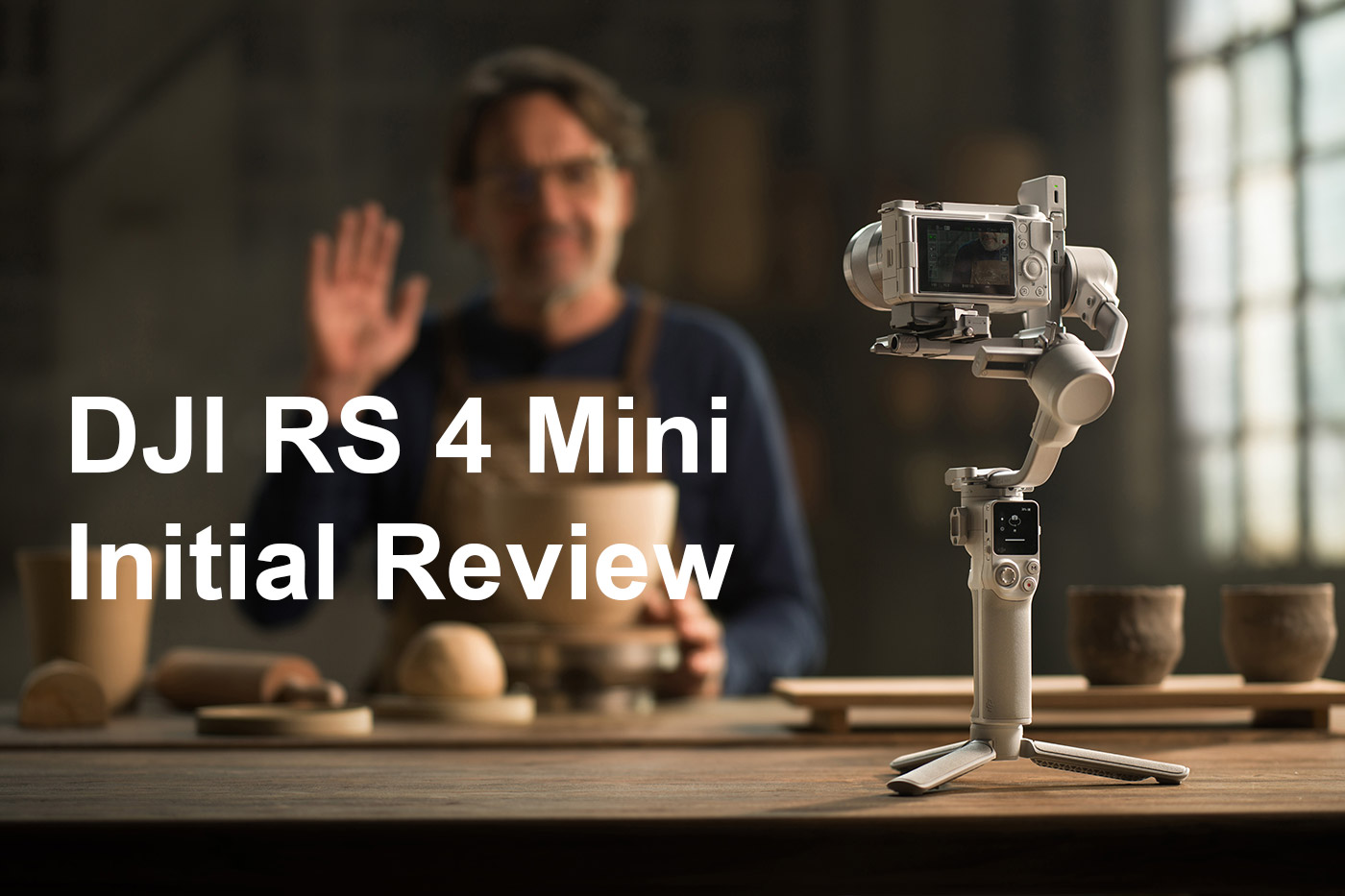
Key Upgrades from the DJI RS 3 Mini
The RS 3 Mini launched in January 2023 and was DJI’s first version of a compact gimbal specifically for mirrorless cameras. It provided a lightweight option for travel-friendly filmmaking but had limitations in battery life, stabilisation efficiency, and ease of setup.
The February 2025 launch of the RS 4 Mini builds on this by refining key areas such as stabilisation performance, faster vertical switching, all while providing a more seamless user experience. Here’s what has been updated:
- 4th-Gen RS Stabilisation Algorithm with smoother performance and a better balance between stabilisation strength and camera movement
- Automated axis locks that instantly unlock and lock with the power button, saving setup time and improving overall efficiency
- Faster vertical switching, which is far more efficient when transitioning to vertical shooting
- RS Intelligent tracking module (Combo Only) for advanced subject recognition and tracking from up to 10m
- Improved battery performance with up to 30% longer battery life and 30% quicker charging
- UI and balancing refinements with smoother touchscreen control, better menu controls, and enhanced balancing adjustments
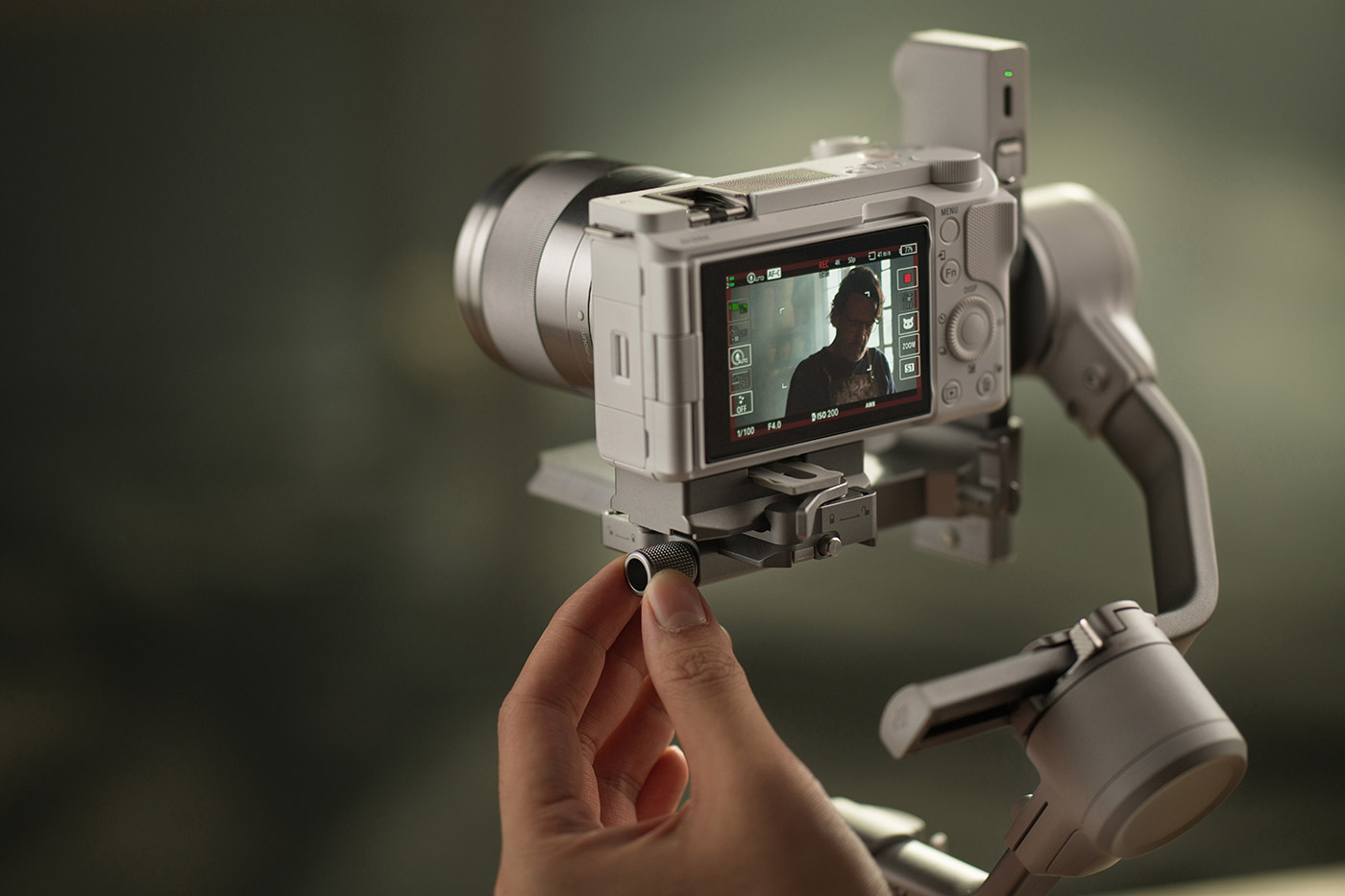
Which to Choose between the DJI RS 4 Mini vs RS 4 Mini Combo
The RS 4 Mini is a great choice for filmmakers who need compact, reliable stabilisation without unnecessary extras. It supports camera setups which weigh up to 2kg, which is suitable for mirrorless cameras, vlog setups, and even smartphones with an optional phone holder.
The RS 4 Mini Combo adds the RS Intelligent Tracking Module, which makes a big difference for solo content creators. With AI-driven tracking, smooth subject re-acquisition, and a tracking range of up to 10m, it’s a very useful tool for commercial videographers, vloggers, and professionals who need more automated follow-filming, and it’s useful for a wide a variety of styles.
For more casual users, the standard RS 4 Mini offers first-class stabilisation at a lower price, but if you need intelligent tracking, the Combo version is well worth the extra investment.
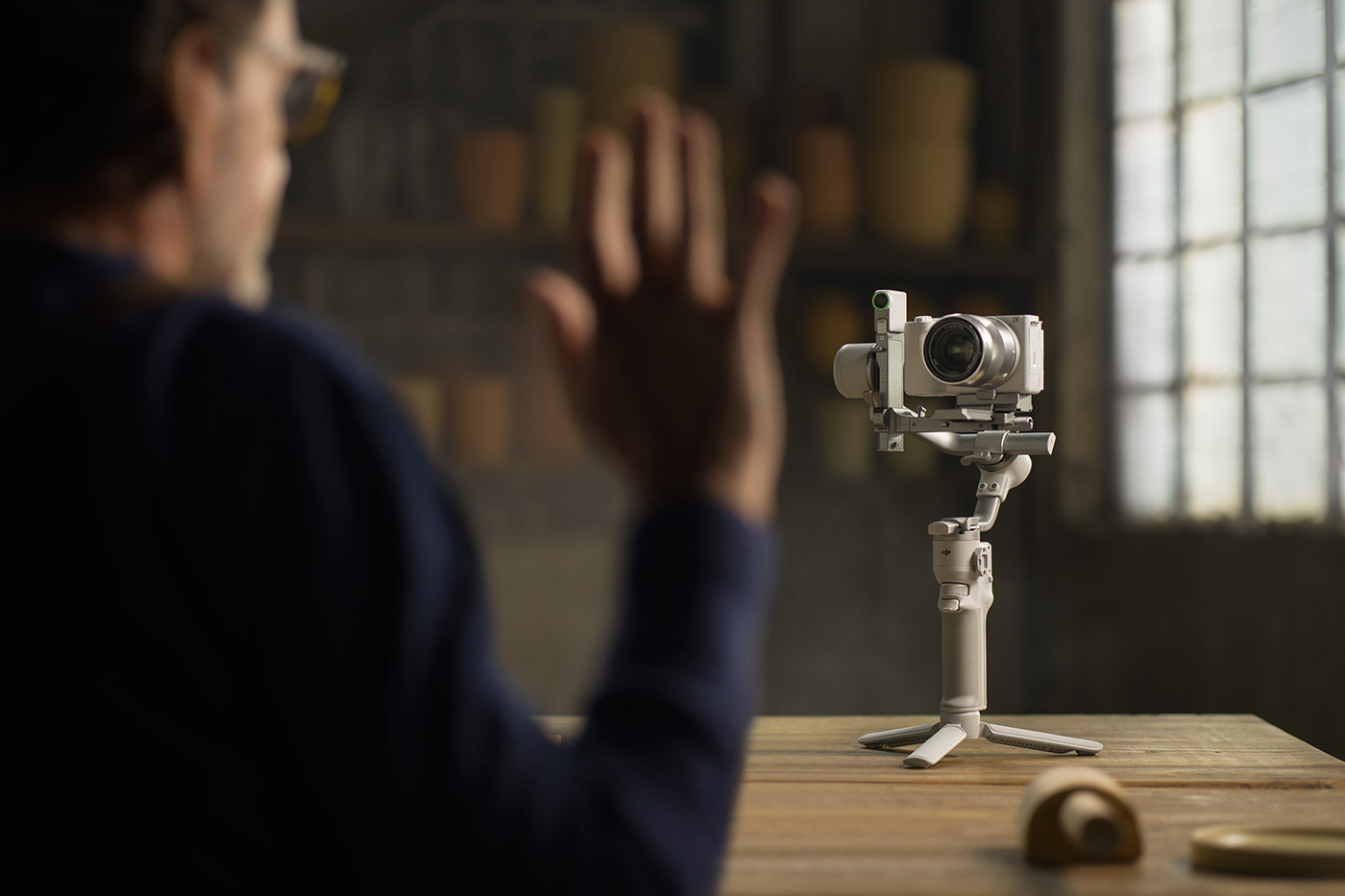
Why Use a Gimbal Like the RS 4 Mini anyway?
With advanced camera body stabilisation, creators may question is a gimbal is worth it and when to use one. However, using a handheld gimbal very clearly eliminates shaky footage, providing cinematic smoothness that’s hard to achieve while handholding a camera. It’s not just about stabilisation, as a gimbal also allows for precise framing, dynamic cinematic movements and automated tracking that make professional-quality footage easier to achieve.
With the RS 4 Mini, creators can capture polished, stabilised content for social media, vlogging, corporate projects, and commercial filmmaking. Features like vertical shooting, Bluetooth camera control, and significantly improved battery life cement this as a worthy upgrade in their own rights.
What Cameras Can the RS 4 Mini Balance?
With a payload capacity of up to 2kg the RS 4 Mini supports a variety of mirrorless camera and mirrorless lens combinations. DJI has outlined some recommended setups, including:
- Canon EOS R5 + RF 24-70mm f/2.8
- Sony A7S III + FE 24-70mm f/2.8 GM II
- Nikon Z7 II + Z 24-70mm f/2.8
- Panasonic S5 II + L 20-60mm f/3.5-5.6
The high-torque motors ensure stable shooting, even when zooming to maximum focal lengths, without requiring frequent rebalancing.
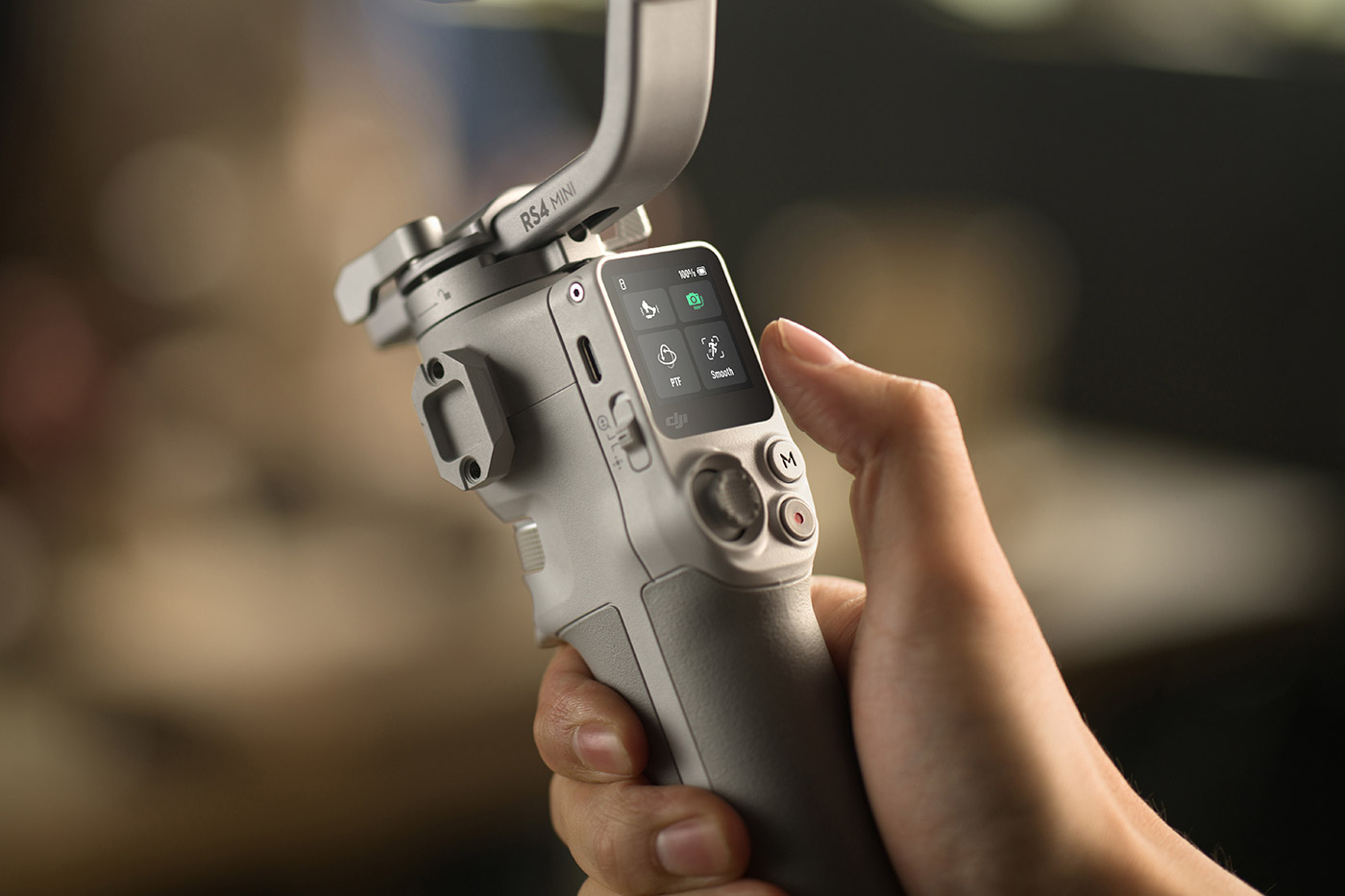
Just How Compact is the RS 4 Mini?
The DJI RS 4 Mini weighs just 890g, which is significantly smaller than larger pro gimbals like the DJI RS 4 (1066g + a grip 203g and QR plates 98g) and RS 4 Pro (1.84kg), which cater to heavier camera rigs but add size and weight.
Despite its smaller size, the RS 4 Mini supports a max. payload up to 2kg, catering to mirrorless camera setups commonly used by independent filmmakers and content creators. Its foldable design is also easier to transport, as it fits into a standard camera bag without taking up more space.
Key specs:
- Weight: 890g (1.96 lbs) (including Quick-Release Plate, excluding tripod)
- Extended Grip/Tripod Weight: 140g (0.3 lbs)
- Folded Dimensions: 236x64x316 mm (excluding the tripod and Quick-Release Plate)
- Unfolded Dimensions: 175x182x338 mm (excluding camera, tripod, and Quick-Release Plate)
- Materials: High-quality, lightweight alloy with Teflon-coated interlayers for smoother balancing
- Portability: Folds flatter for easy storage in a camera bag
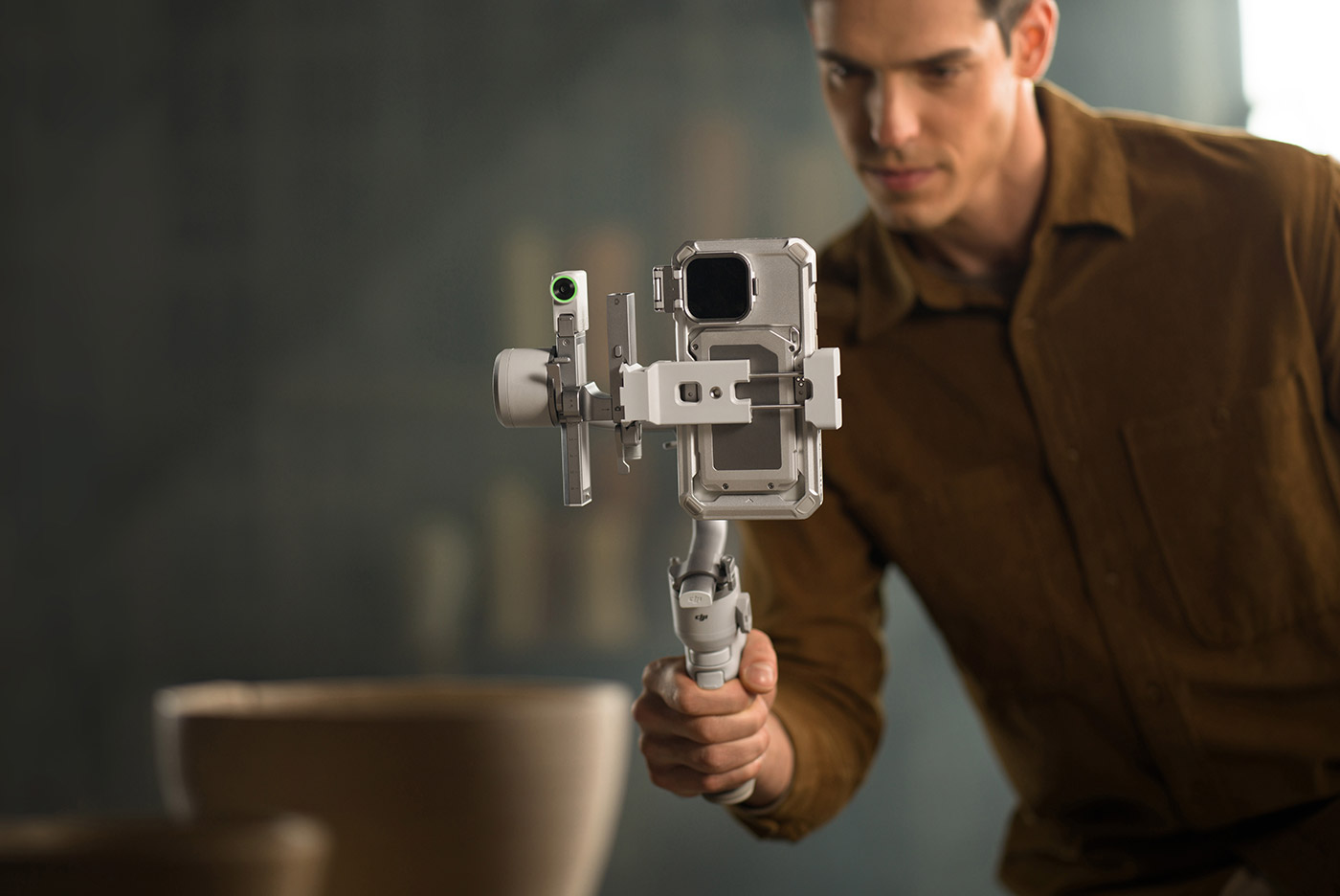
How Long Can You Film with the RS Mini 4?
Good battery life is crucial for any gimbal, especially for on-the-go creators who film long takes, travel content, or record during live events. The DJI RS 4 Mini battery performance has been upgraded, and it offers up to 13 hours of runtime, which is around 30% better than its predecessor, as well as being around 30% quicker to charge.
Unlike larger gimbals that require swappable battery grips, the RS 4 Mini charges via USB-C, reaching five hours of use from just a mere 30-minute charge. This means less downtime between shots and more flexibility for busy filming schedules.
Battery specs:
- Battery Type: LiPo 2S (Model: BHX724-3100-7.2)
- Capacity: 3100 mAh
- Max Runtime: 13 hours (stationary conditions)
- Charging Time: Approx. 1 hour 50 minutes (with a 30W charger)
- Charging Specification: 9V/2.5A via USB-C
- Suggested Charging Temperature: 5° to 40° C (41° to 104° F)
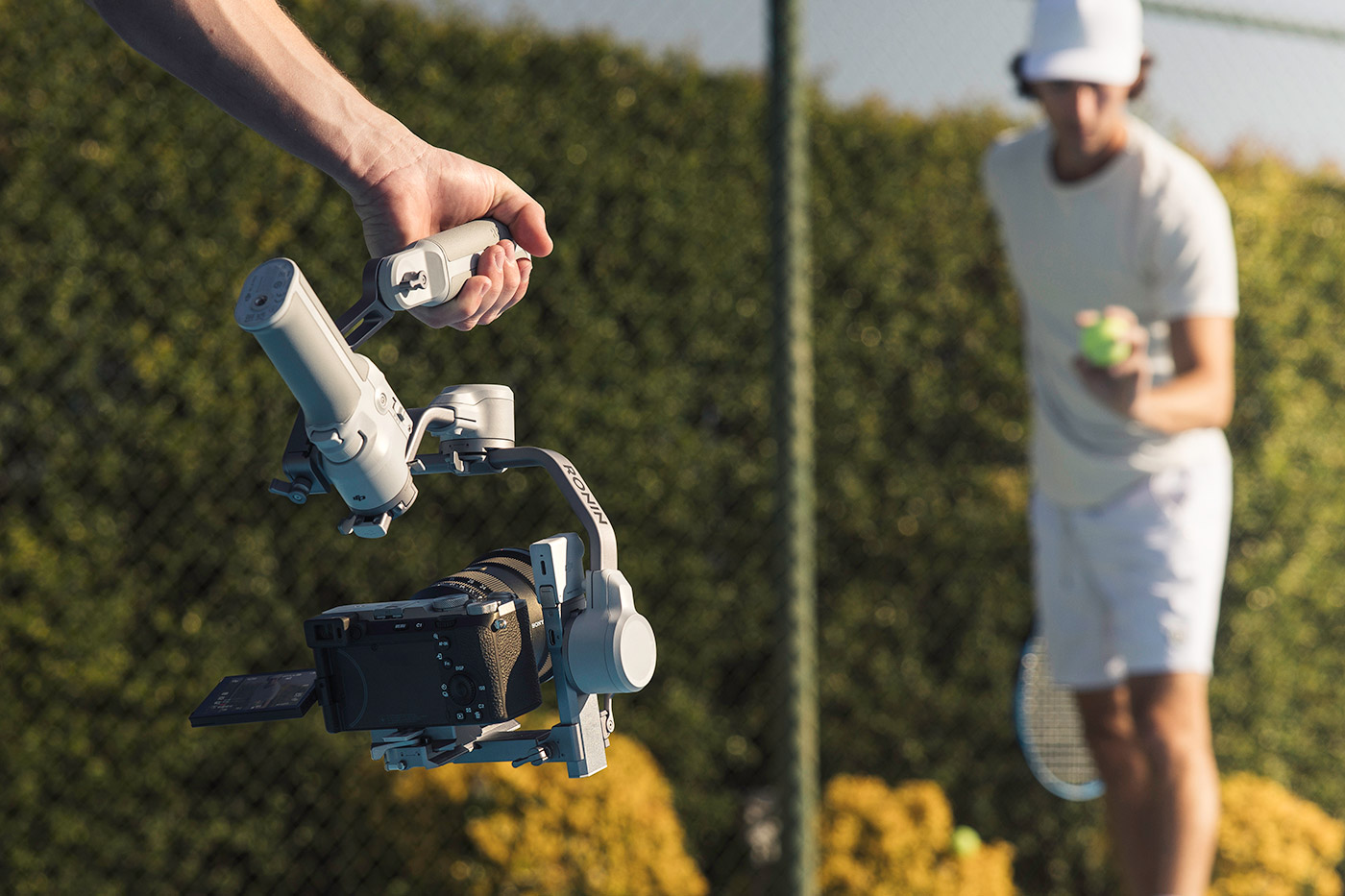
How is handling?
Ergonomics can make or break a shoot, especially during longer recording sessions and when you are near the 2kg payload, as you’ll be shooting with around 3kg weight. The DJI RS 4 Mini refines ergonomics to provide better handling with a redesigned grip, improved button layout, and a smaller briefcase handle for low-angle shots.
These make it easier to operate, reducing fatigue while still delivering smooth, precise camera control. Refinements in this generation include:
- Upgraded grip design for better comfort during extended use
- New briefcase handle reduces size and weight for easier low-angle shooting
- Refined button layout for quick access to key controls
- Smooth joystick operation for precise camera movement.
![]()
DJI RS 4 Mini vs DJI RS 3 Mini Specs Comparison
With improved stabilisation, automated axis locks, faster vertical switching, and longer battery life, the DJI RS 4 Mini is upgraded vs the RS 3 Mini. These upgrades make it a more efficient tool for solo creators, vloggers, and filmmakers. The addition of Bluetooth 5.1, a redesigned UI, and a 30% battery improvement makes the RS 4 Mini a worthy successor. Below is a detailed comparison of their key features.
|
|
DJI RS 4 Mini (new) |
DJI RS 3 Mini |
|
Weight |
890g |
795g |
|
Payload Capacity |
0.4 – 2kg |
0.4 – 2kg |
|
Battery Runtime |
Up to 13 hours |
Up to 10 hours |
|
Charging Time |
Approx. 1 hour 50 mins |
Approx. 2.5 hours |
|
Stabilisation Algorithm |
4th-Gen RS Stabilisation |
3rd-Gen RS Stabilisation |
|
Axis Locks |
Automated |
Manual |
|
Vertical Shooting |
Faster third-gen native vertical shooting |
Standard vertical mode |
|
Balancing Improvements |
Teflon-coated interlayers, fine-tuning knob, additional positioning slots |
Standard balancing system |
|
Intelligent Tracking |
Available with RS 4 Mini Combo |
Not supported |
|
Screen & UI |
Refined UI, smoother touchscreen, auto-lock feature |
Standard touchscreen |
|
Bluetooth Shutter Control |
Supported |
Supported |
|
Accessory Ports |
NATO Port, 1/4"-20 Mount, RSS Camera Control, Pogo Pin |
NATO Port, 1/4"-20 Mount, RSS Camera Control |
|
Operating Temperature |
-10° to 45° C |
-10° to 45° C |
|
Price |
£339 (Standard) / £419 (Combo) |
£309 |
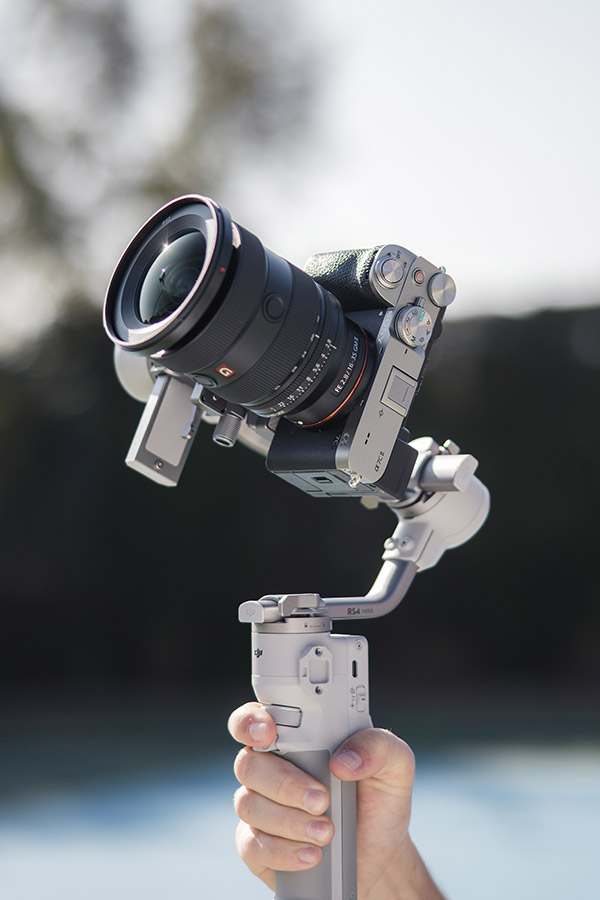
Should You Upgrade?
If you’re using the RS 3 Mini, you may be wondering whether it’s worth upgrading. Here’s what has changed:
- Weight and Payload – The RS 4 Mini remains compact but supports better balancing adjustments for a wider range of cameras.
- Stabilisation – The 4th-Gen RS Algorithm improves performance, particularly in vertical shooting and dynamic movements.
- Battery Life and Charging – 30% longer battery life with fast-charging support.
- Ease of Use – Automated axis locks and UI refinements make it faster to set up and operate.
- Tracking Features (Combo Only) – The RS Intelligent Tracking Module is a major upgrade for those who shoot solo.
If you need better stabilisation, tracking, and efficiency, the RS 4 Mini is a worthwhile step up from the first gen.
The DJI RS 4 Mini is a significant upgrade for content creators who need professional stabilisation from a compact, travel-friendly gimbal. It combines a number of upgrades such as improved battery life, faster vertical switching, and enhanced handling, streamlining the filmmaking process for vloggers, filmmakers, and social media creators.
The standard RS 4 Mini is perfect for solo creators who need stabilisation without any fancy extras, while the RS 4 Mini Combo adds the RS Intelligent Tracking Module which brings AI-powered subject tracking and automated framing.
Whichever you choose, this generation gimbal delivers smooth, cinematic shots with minimal fuss. Order yours today and take your filmmaking to new smooth heights.
Share this post:
By Nick Dautlich on 20/02/2025
Nick Dautlich
Senior Content Writer and Product Reviewer
Nick Dautlich is the Senior Content Writer and Product Reviewer at Park Cameras, with over 15 years of photography experience. A Sony Imaging Professional and expert reviewer, Nick has worked with major brands such as Canon, Sony and Nikon. His work is also featured on Vanguard World UK’s website, Capture Landscapes, and Shutter Evolve. Nick’s photography includes National Trust projects and magazine covers and he is passionate about landscapes and storytelling. Nick also enjoys hiking and teaching his children about nature. Learn more on his profile page.
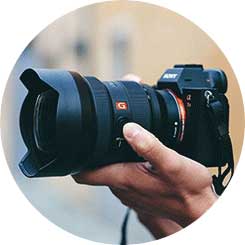
Trade in your old equipment
Fast and easy trade in service ensures your old gear is collected efficiently and you are paid quickly! It's very simple to trade in your unwanted photography gear. Just head over to our dedicated Sell or Part Exchange page, fill out the details, and we'll get back to you with an offer for your old gear. Take the cash, or put it towards the cost of your new gear. It's up to you! Find out more
sign up to the newsletter
Keep up to date on the latest photography news, events and offers. Sign up now
